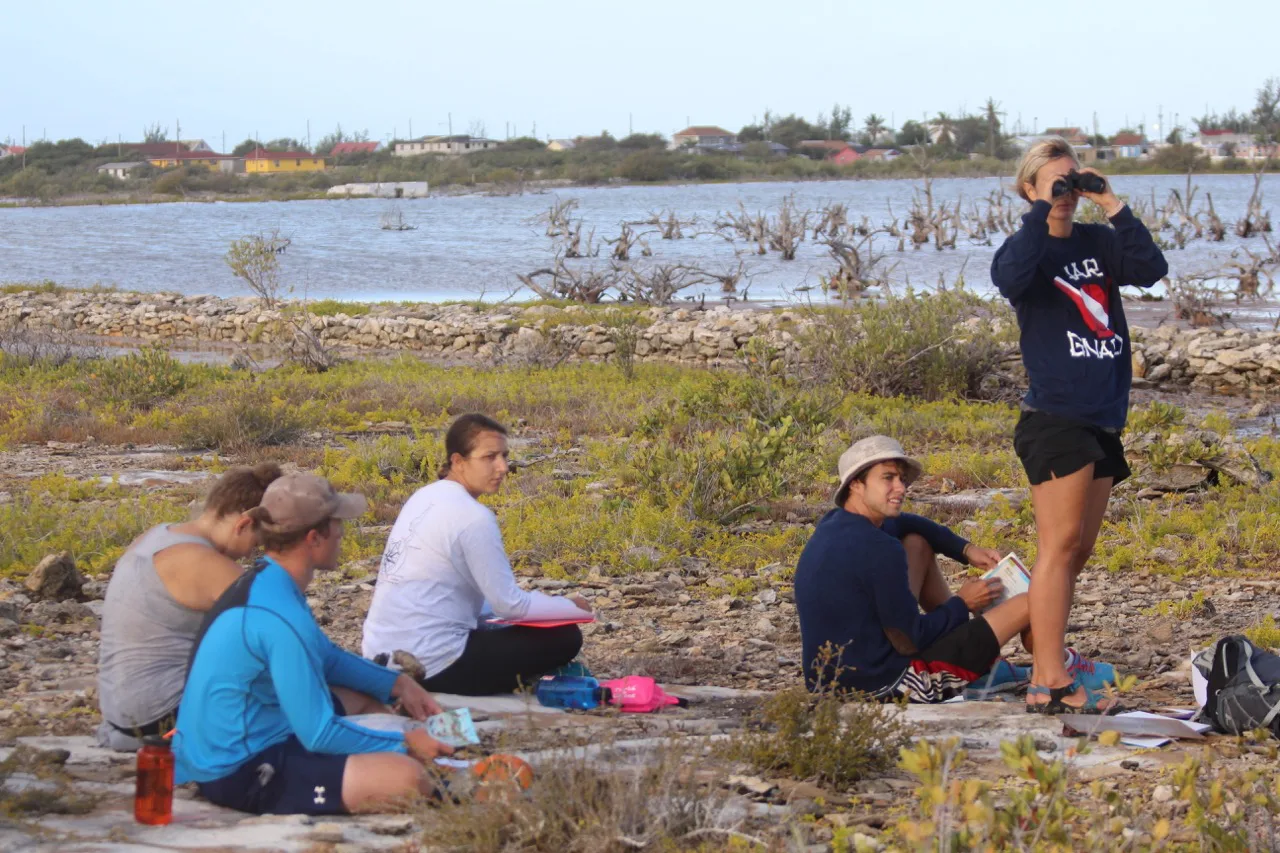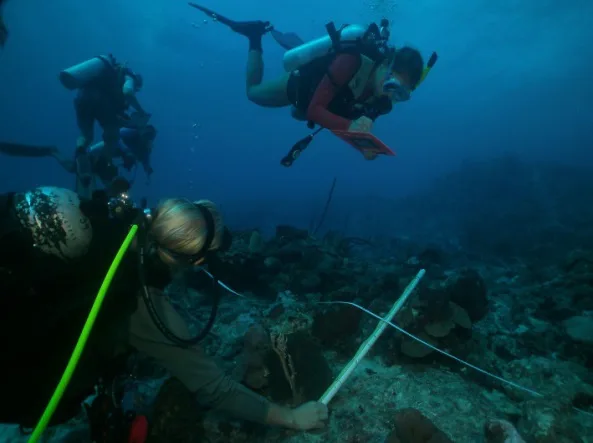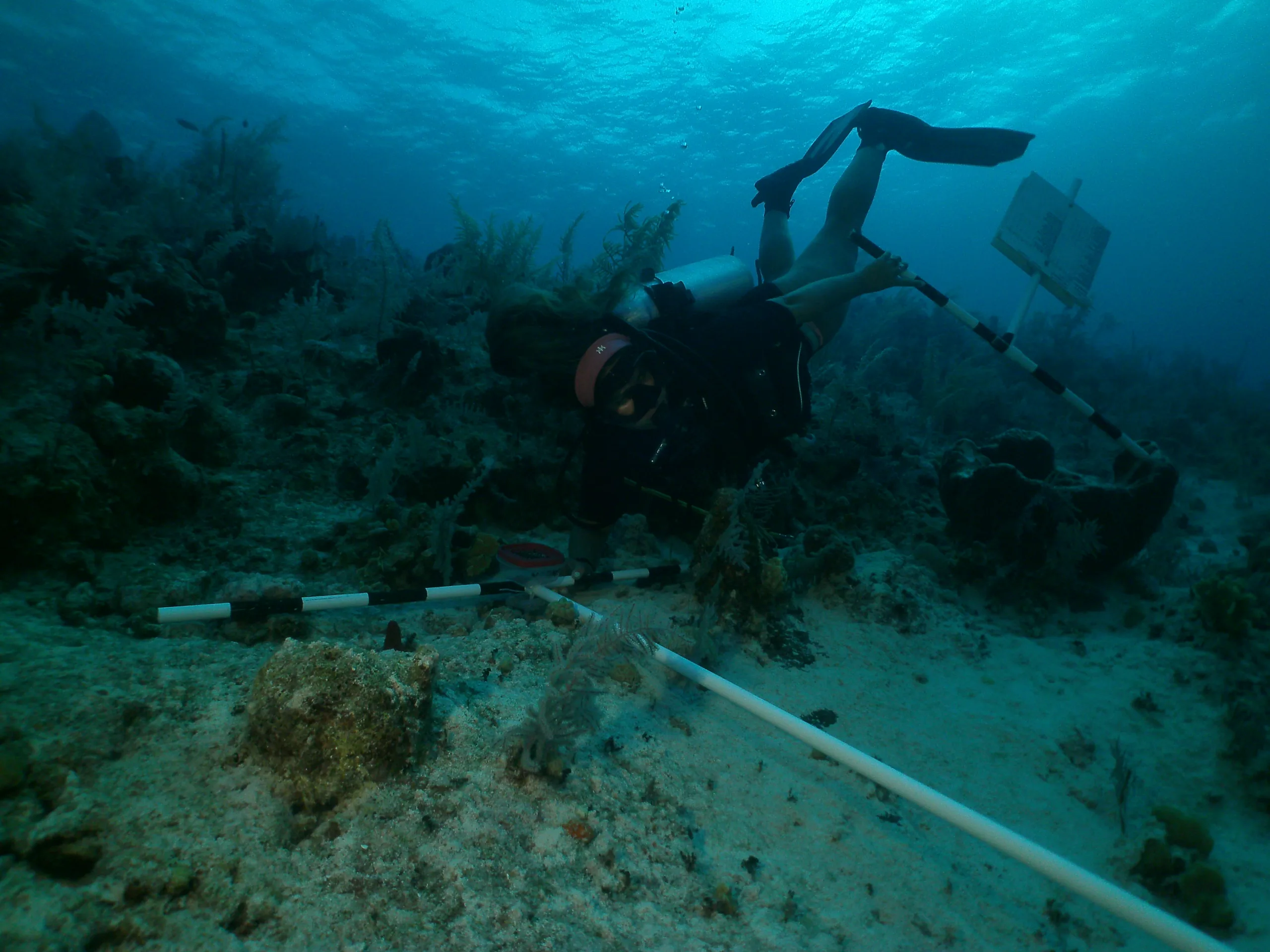Health of Local Marine Systems
Is seems like just yesterday that 34 wide-eyed students arrived on South. This semester we learned about the biology and ecology of our marine systems, how our resources are used and managed, and how policies are designed to sustain these resources. This all in preparation for the Directed Research component which started right after mid-semester break. Similar to other Centers, projects are designed to address resource management questions, and are developed with local and international stakeholders.
To address some of these questions, this semester, students: compared fish populations inside and outside the Admiral Cockburn Land and Sea National Park; participated in a TCI-wide conch visual assessment (part of a CITES requirement for export of conch); collected quantitative and qualitative observations on the bird population on South Caicos; used “photovoice” to determine local citizens’ views of their terrestrial and marine ecosystems; assessed the effectiveness of lobster casitas (artificial lobster habitats) put out last semester in recruiting juvenile lobster; continued our long-term data collection at the docks on finfish landings (increasing importance with the introduction of new fishing regulations); and used both unmanned aerial vehicles (UAVs) and baited remote underwater video (BRUV) to assess our local elasmobranch populations.

The SFS Center for Marine Resoruce Studies recognizes the importance of studying climate change impacts on local ecosystems by including related projects in program and research components. Impacts to marine and coastal ecosystems include those linked to temperature change on organism metabolism, water chemistry including carbonate cycle, precipitation change on water balance, and wind and water circulation pattern changes. Long-term data collection is a crucial element of observing and understanding such impacts, beneficial to stakeholders and essential to policy makers.
Over the past several semesters, I have lead teams of students to collect baseline data on the health of the local reef system. Sites were permanently marked at three depths in the Admiral Cockburn Land and Sea National Park (5 minutes from our dock), one of several marine protected area near South Caicos, so they could be revisited. The teams use several methods to assess the overall condition of the system including measures of species composition (number of different organisms observed) using the Atlantic and Gulf Rapid Reef Assessment protocol (AGRRA – www.agrra.org), documenting and recording fish species abundance (including the invasive lionfish), and photographing and videoing the benthic community for composition analysis using specialized software.


This semester I had the opportunity to work with students to assess the fish population inside this Marine Protected Area and compare this to a nearby reef used for fishing. We used the three methods they learned about in their Marine Ecology class – belt transects, point census, and BRUVs. Our data are proving interesting. Belt transects appear to be the most effective method for our area and reef structure while BRUV are the least effective, although attract a more interesting population (several elasmobranch species were observed). These areas may be protecting some of our species, but falling short on others. We are in the write-up phase – groups of students sit and converse about what they have seen and learned and the significance of their data. Directed Research ends with our Open House, where community members learn about new projects and were updated on continuing projects (and then we eat cake).
Related Posts


Alumni Reflections: Stories of the Return to Kenya
